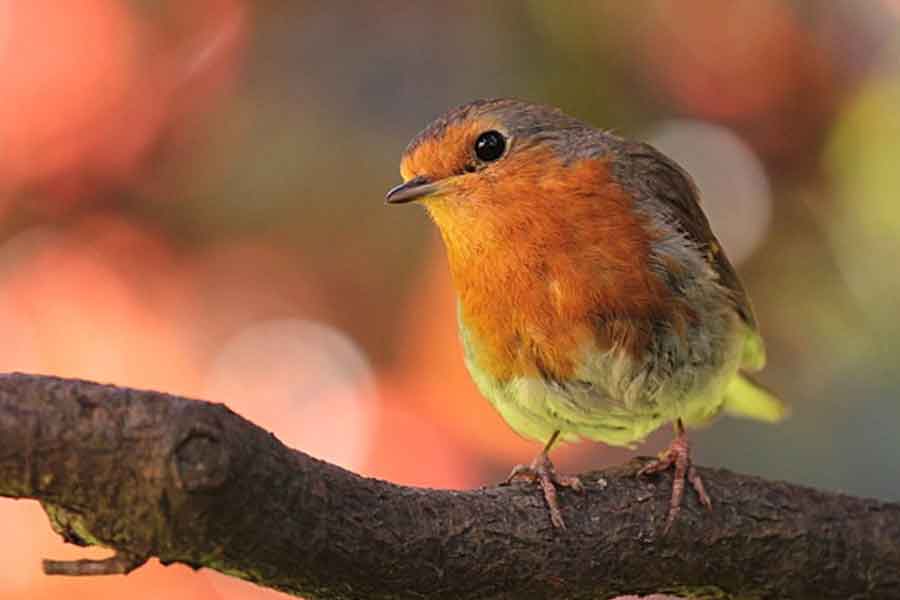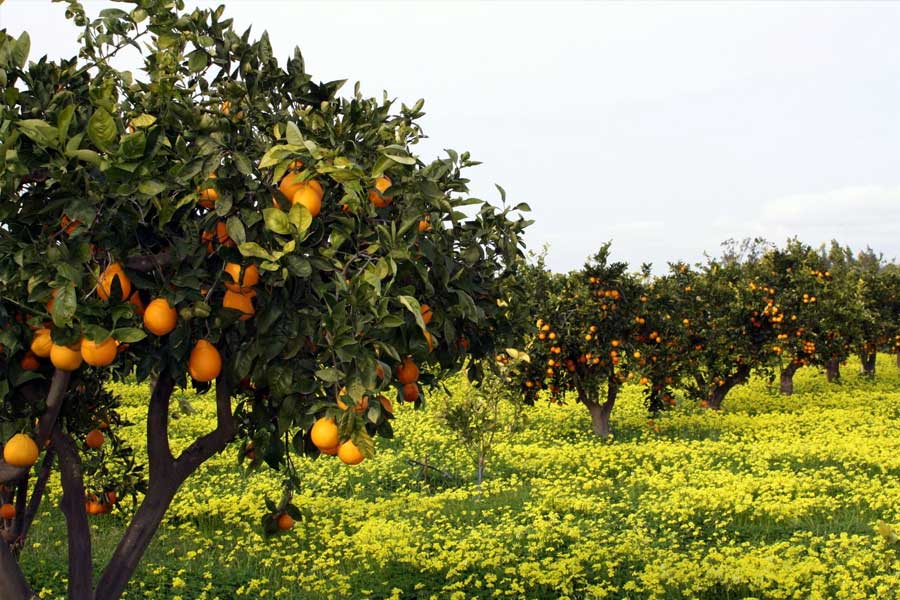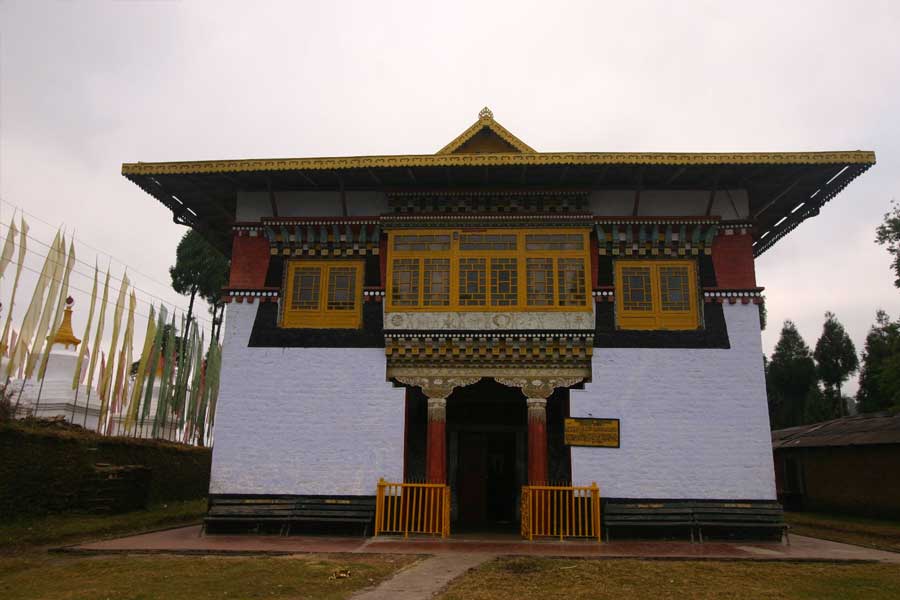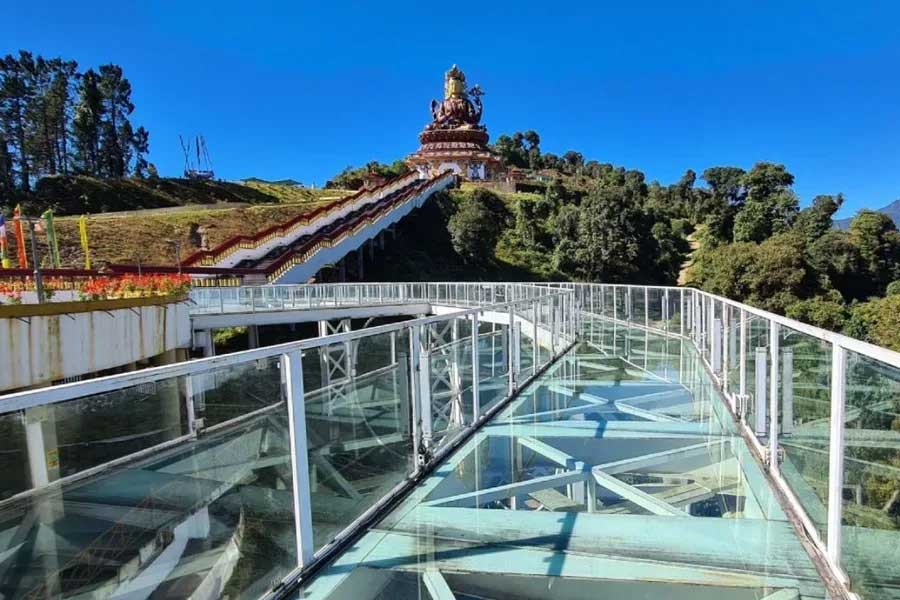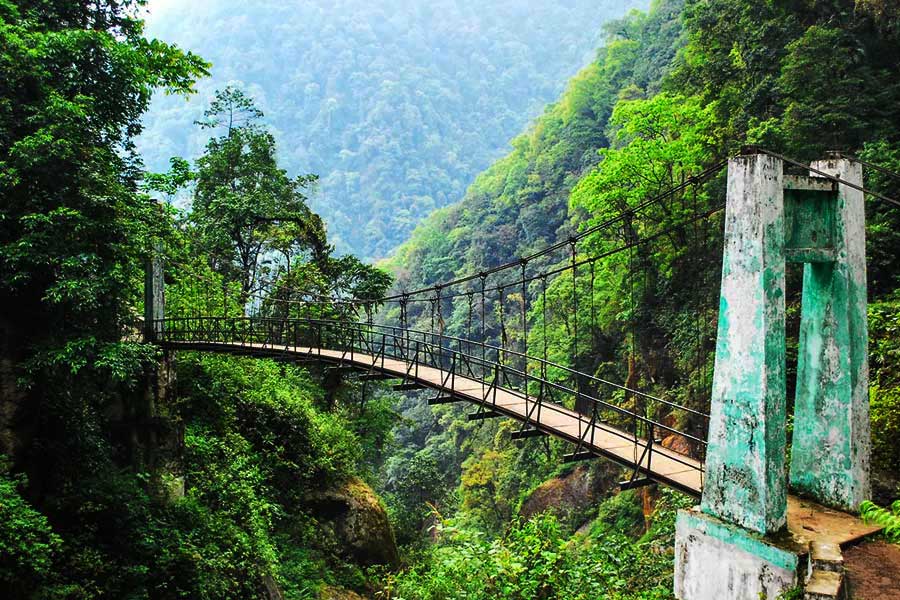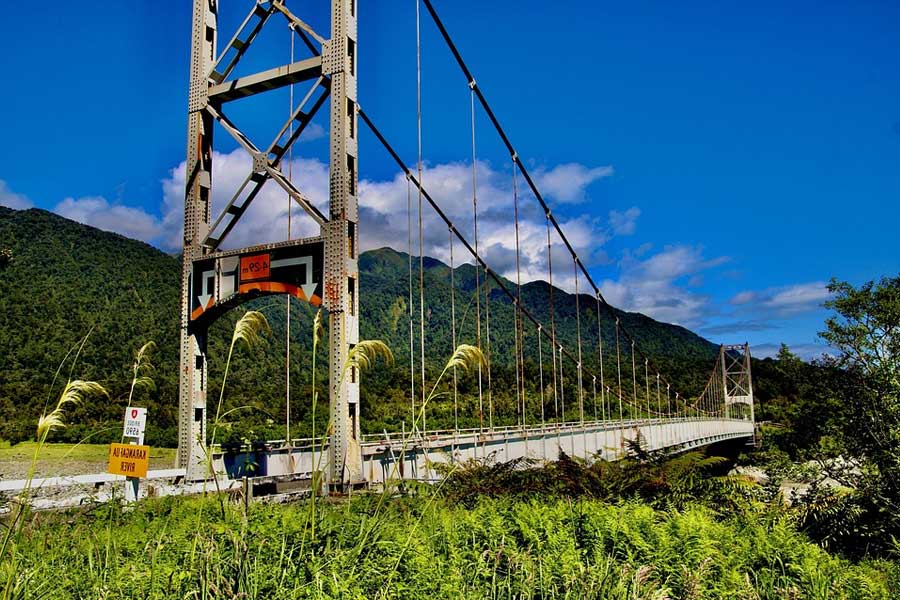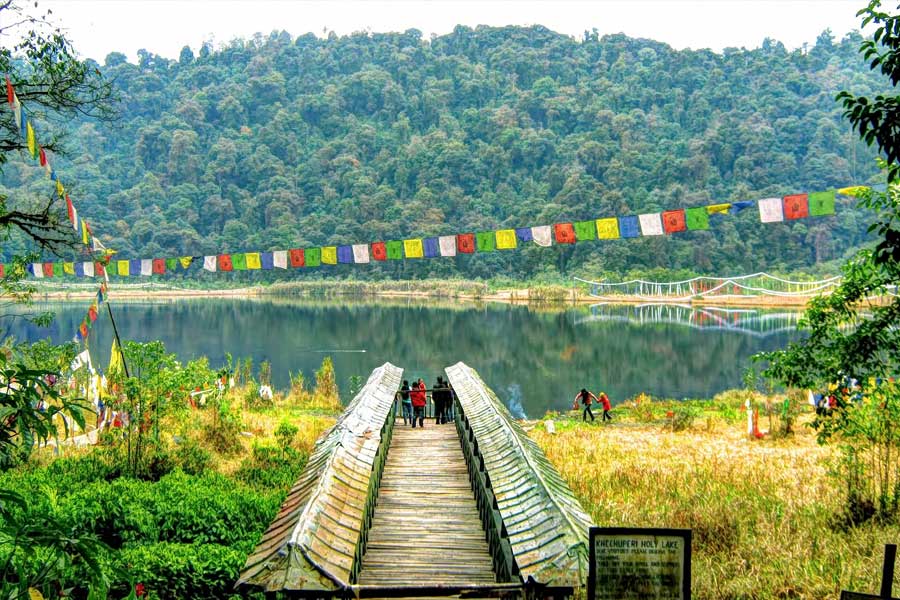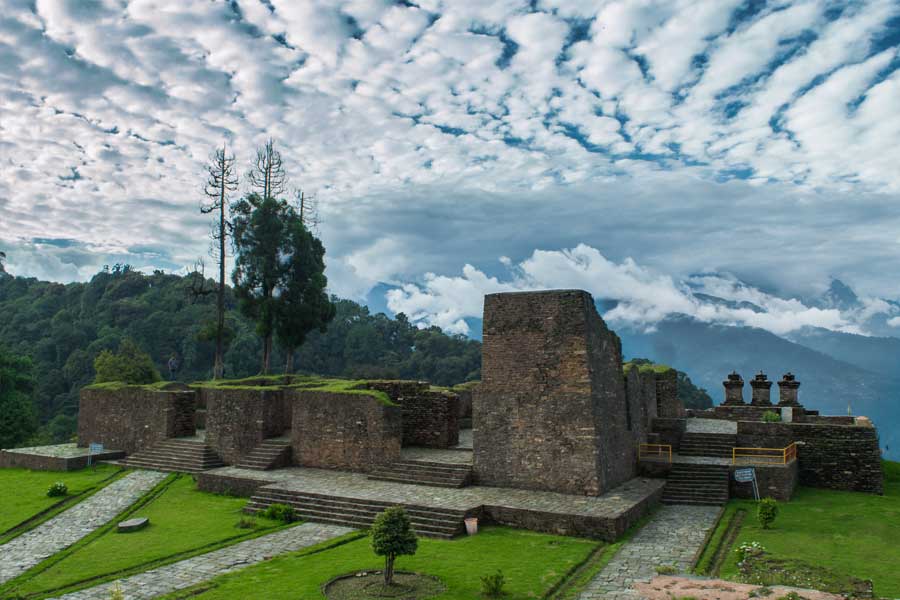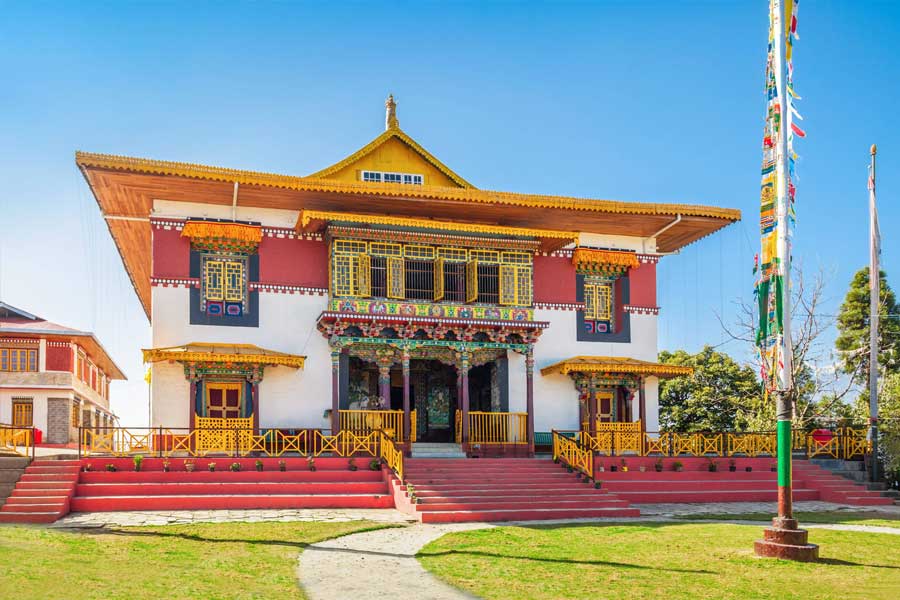In & Around Pelling
Rabdentse Bird Park :-
Rabdentse is one of the famous tourist spot in Pelling, Sikkim. From the main road one has to walk an approximately 2 km trail to reach this place. The trail is passing through a thickly wooded moist temperate Oak – Chestnut forest. It is so densed that during mid of the day also the sunlight cannot enter into some places. The trail is easy for everybody but older person need to be very cautious before starting the trail.
Best Time to Visit :-
The best time to visit is from November–December.
Rimbi Orange Garden :-
Rimbi Orange Garden is a private orange orchard near Pelling, on the banks of the river of the same name. It was not a part of the plan but it turned out to be a good detour for 30 minutes. But before that, we need to understand a few things about Sikkim and its organic push as several questions popped up in my mind as I visited it. Sikkim is a rare state in NE, India which generally makes it to the headlines for positive reasons. It is one of the cleaners and better-governed states without any serious law and order issues or political conflicts (except of course the recurring border issues with China, but those areas are not for tourists anyway). One of the things about Sikkim that keeps returning to the headlines is its status as a 100% organic state. This is a culmination of the efforts that started in 2003, when various circumstances forced the state to take drastic measures.
Sanga Choeling Monastery :-
One of the oldest monasteries of Sikkim, the Sang Choling Monastery has been built according to the Tibetan style of architecture. It houses several ancient paintings, accessories and clay statues, which date back to the 17th century. The monastery is an important site of the heritage circuit for Buddhist devotees and was built in 1697 by Lama Lhatsun Chempo. It is believed that secret mantras (guhyamantra) were taught here in ancient times. Situated amidst a picturesque backdrop of the Great Himalayas, the monastery also provides spectacular natural views. Entry to it is restricted to men and no one apart from the members of the Bhutia and Lepcha communities is allowed in the inner sanctum. Another attraction is a 300-year-old crematorium located nearby.
Pelling Skywalk :-
Pelling, an iconic destination in Sikkim that is famous for its majestic hill views and vivid flora and fauna. Experience the scenic views of Pelling with this first glass skywalk settled at an elevation of 7,200 feet over the ocean level alongside the fourth tallest sculpture of Chenrezig. The whole place will make you speechless with its beauty. Experience India's first glass-bottom Skywalk surrounded by amazing natural vistas of Pelling. Take the adrenaline pumping walk on the glass bottom elevated at a whopping altitude of 7,200 feet above sea level. Click amazing photos and catch the amazing views of the adjacent 137-feet Chenrezig statue in the backdrop. Skip the public transport hustles, enjoy the comfort of round trip transfers from your hotel location. This package is valued at INR 699 in the market.
Best Time to Visit :-
The best time to visit Pelling Skywalk would be from February to July.
Khangchendzonga National Park :-
Khangchendzonga National Park is a UNESCO World Heritage Site and it covers an area of 1784 sq km. This high altitude national park in Yuksom is known for its spectacular wildlife where exotic animal species such as Red Panda, Snow Leopard, Great Tibetan Sheep, Bharal, Musk deer etc can be spotted. The park also has a number of bird species like the Black-necked Crane, Grus nigricollis, Grey Peacock Pheasant, Himalayan Monal Pheasant, Blood Pheasant, Satyr Tragopan, Tibetan Snow Cock, and Himalayan Snow Cock. Khangchendzonga National Park has about 18 glaciers, including Zemu Glacier, which is quite famous for its massive size. Besides this, the national park also has over 17 alpine lakes along with a view of about 19 Himalayan mountains peaks, amongst which is the popular Mount Khangchendzonga. There is also a sacred shrine named Tholung Monastery in the buffer zone of the national park.
Best Time to Visit :-
The best time to visit the Kanchenjunga National Park is between April and May.
Singshore Bridge :-
Singshore Bridge, with an height of over 100 m and 240 m in length, is the highest bridge in Sikkim and the second highest bridge in Asia. It is truly a man made marvel that offers the spectacular baseview of immense greenery that makes it difficult to distinguish between the lowlands and the mountains. You can feel the thrill when you are standing in the middle of the bridge and the strong wind blows. The river flowing through the uneven rocks seems breathtaking along with the effusive sound of the waterfalls. It is one among the oldest bridge that connects two hills and shortens the travel time as well as the distance for the trekkers. This engineers triumph is certainly one of the most popular tourist destination in Sikkim.
Best Time to Visit :-
Other than the monsoon months from June - August, rest all the months are considered to be the best months to visit the Singshore Bridge. The Bridge is open on all days of the week from 6:00 am - 6:00 pm with no entry charges.
Khecheopalri Lake :-
Khecheopalri Lake, originally known as Kha-Chot-Palri, is a lake located near Khecheopalri village, 147 kilometres (91 mi) west of Gangtok in the West Sikkim district of the Northeastern Indian state of Sikkim. Located 34 kilometres (21 mi) to the northwest of Pelling town, the lake is sacred for both Buddhists and Hindus, and is believed to be a wish fulfilling lake. The local name for the lake is Sho Dzo Sho, which means "Oh Lady, Sit Here". According to folklore legend related to Sikkim topography, the Khecheopalri is said to represent one of the four plexus of the human body namely, the thorax; the other three plexes are said to be represented by Yuksom (the third eye), Tashiding (head) and Pemayangtse (the heart). The formation of the lake is estimated to be 3500 years old. The lake is situated amidst pristine forest at an altitude of 1,700 metres (5,600 ft) near Tsozo village. The lake drains a catchment area of the Ramam watershed (Ramam mountain gives its name to the valley) and has a drainage area of 12 square kilometres (4.6 sq mi) (including area of bog of 70,100 square metres (755,000 sq ft). The periphery of lake has the shape of a foot.
Best Time to Visit :-
Best season to visit the lake is in the winters – October to February.
Rabdentse Ruins :-
The Rabdentse ruins are part of Buddhist religious pilgrimage circuit starting with the first monastery at Yuksom known as the Dubdi Monastery, followed by Norbugang Chorten, Tashiding Monastery, the Pemayangtse Monastery, the Sanga Choeling Monastery, and the Khecheopalri Lake. Phuntsog Namgyal, the first Chogyal or King of Sikkim, was consecrated as king of Sikkim at Yuksom and succeeded by his son, Tensung Namgyal in 1670. The reign of the Chogyal was peaceful and saw the capital shifted from Yuksom to Rabdentse. The Namgyal had three wives – a Tibetan, a Bhutanese and a Limbu girl. The Limbu girl, daughter of the Limbu chief Yo Yo-Hang had inducted seven girls from her family who all married into noble Sikkim families. Many of them became councillors to the King and were given the title Kazi, which gave them enormous powers and privileges.
Best Time to Visit :-
The best time for visiting Rabdentse Ruins is throughout the year. Tourists can visit this place in any season keeping in mind the comfort level. There is a lot to know from the ruins of Rabdentse.
The Pemayangtse Monastery :-
The Pemayangtse Monastery is a Buddhist monastery in Pemayangtse, near Pelling in the northeastern Indian state of Sikkim, located 110 km west of Gangtok. Planned, designed and founded by Lama Lhatsun Chempo in 1647, it is one of the oldest and premier monasteries of Sikkim, also the most famous in Sikkim. Originally started as a small Lhakhang, it was subsequently enlarged during the reign of the third Chogyal Chakdor Namgyal and Khenchen Rolpai Dorjee in the year 1705 and consecrated by the third Lhatsun Chenpo Dzogchen Jigme Pawo in the year 1710 C.E. The monastery follows the Nyingma Order of Tibetan Buddhism and controls all other monasteries of that Order in Sikkim. The monks of this monastery are normally chosen from the Bhutias of Sikkim. The monastery was built for "pure monks" meaning "monks of pure lineage", celibate and without any physical abnormality. This practice is still retained. Only the monks of Pemayangtse Monastery are entitled to the title "ta-tshang". The head lama of this monastery had the unique privilege of anointing the Chogyals of the erstwhile monarchy of Sikkim with holy water. Pemayangtse means "Perfect Sublime Lotus", and is said to represent one of the four plexus of the human body.
Best Time to Visit :-
The best time to visit Pemayangtse Monastery is from March to June.

